A perfect two-day mini break
The ancient city of Chester in the delightful county of Cheshire is nestled in northwest England and ideal for a relaxing, cultural mini break throughout all seasons of the year.
Chester is exceptionally picturesque and historic and often floats beneath the radar of many visitors. Frequently Chester is overshadowed by travellers seeking out the delights of the vibrant and bustling cities of Liverpool and Manchester; however, for a slower-paced city break, Chester is perfect.
The cathedral city of Chester is easily navigated on foot, with many of its heritage sights and landmarks just a short stroll from the unique Rows. Oh yes, and don’t miss out on a leisurely stroll along The Groves beside the River Dee.
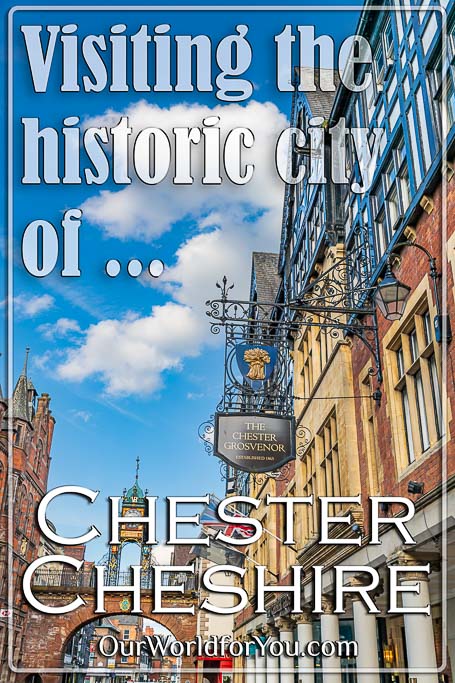
To compliment your visit to Chester, I can highly recommend combining your trip with a relaxing stay at Hotel Indigo Chester, slightly east of the Eastgate Clock.
So, without further ado, let’s head off and explore the streets of Chester.
Where is Chester?
How to get to Chester
- By Train
The central railway station in the city is Chester, it’s around a 10–15-minute walk into the historic centre.
- By Car
Main motorway routes to Chester are through the M6, M56 and M53. Chester has many central car parks; alternatively, you can use the Park and Ride facility.
- By Coach
Arrival by National Express coach to the city; you will be dropped off at the bus interchange at Gorse Stacks, north of the city walls.
- By Air
The closest airports to Chester are Manchester International (MAN) and Liverpool John Lennon (LPL), which are both around 40 minutes away by road.
A brief history of Chester
Welcoming the Romans, Normans, and Victorians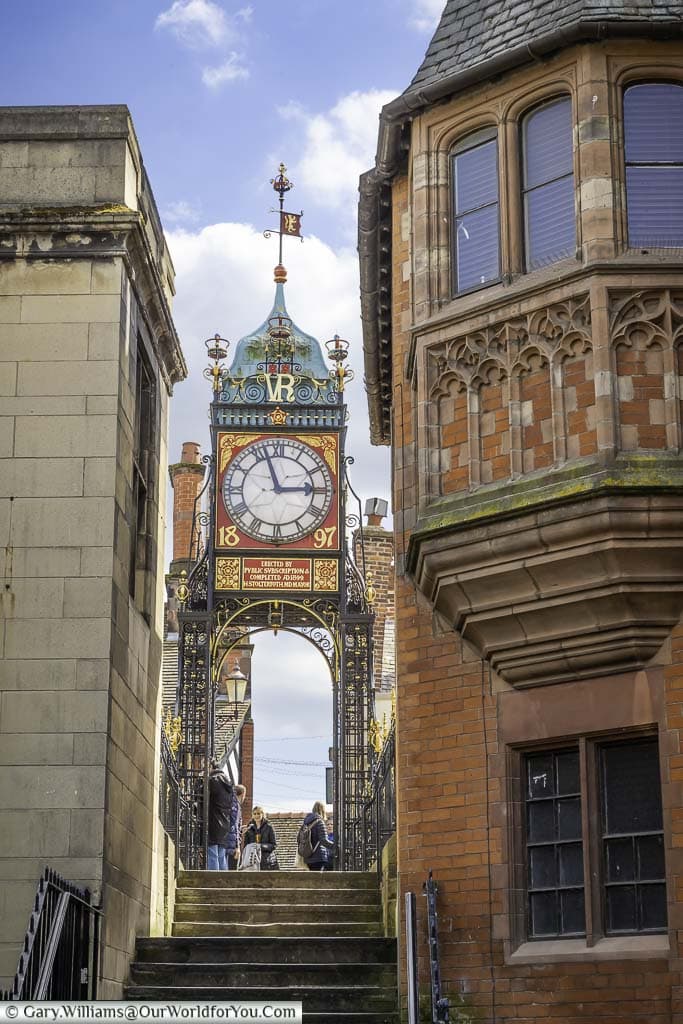
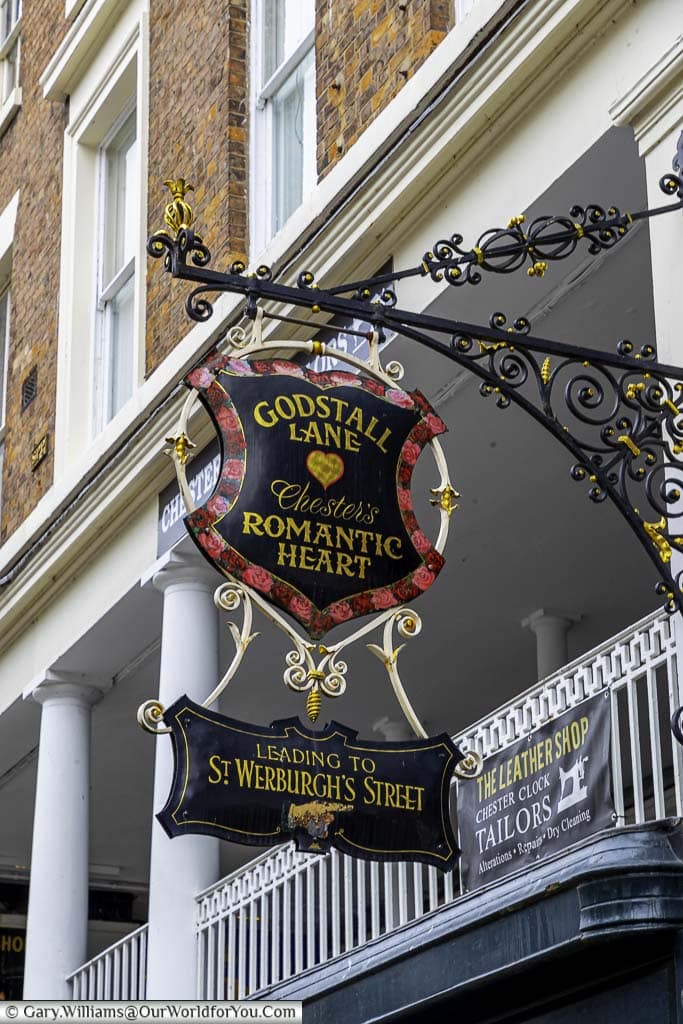
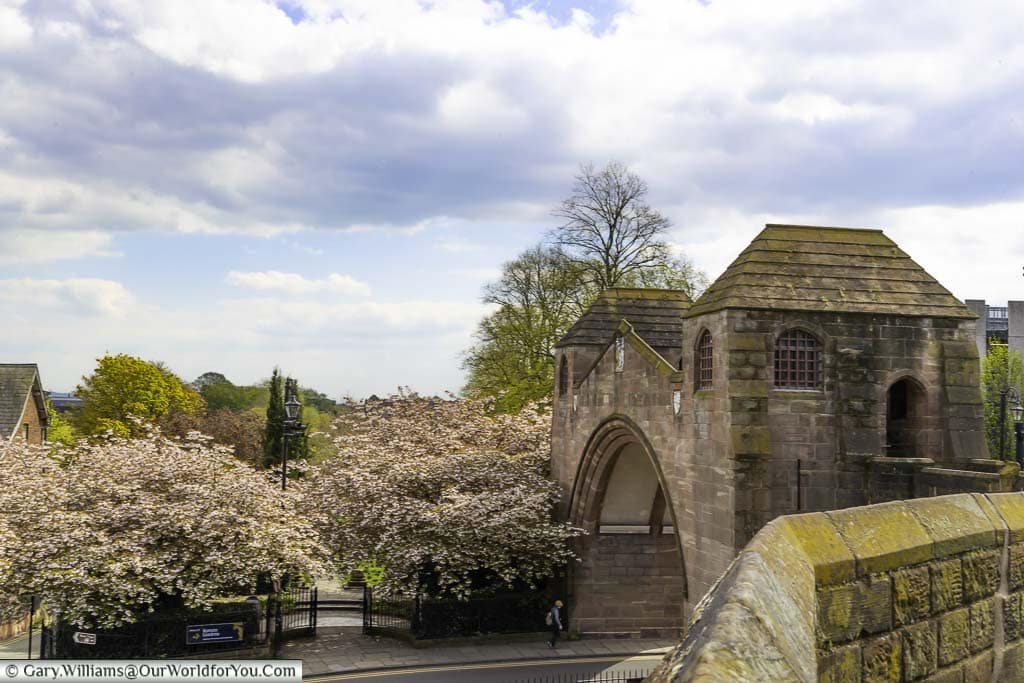
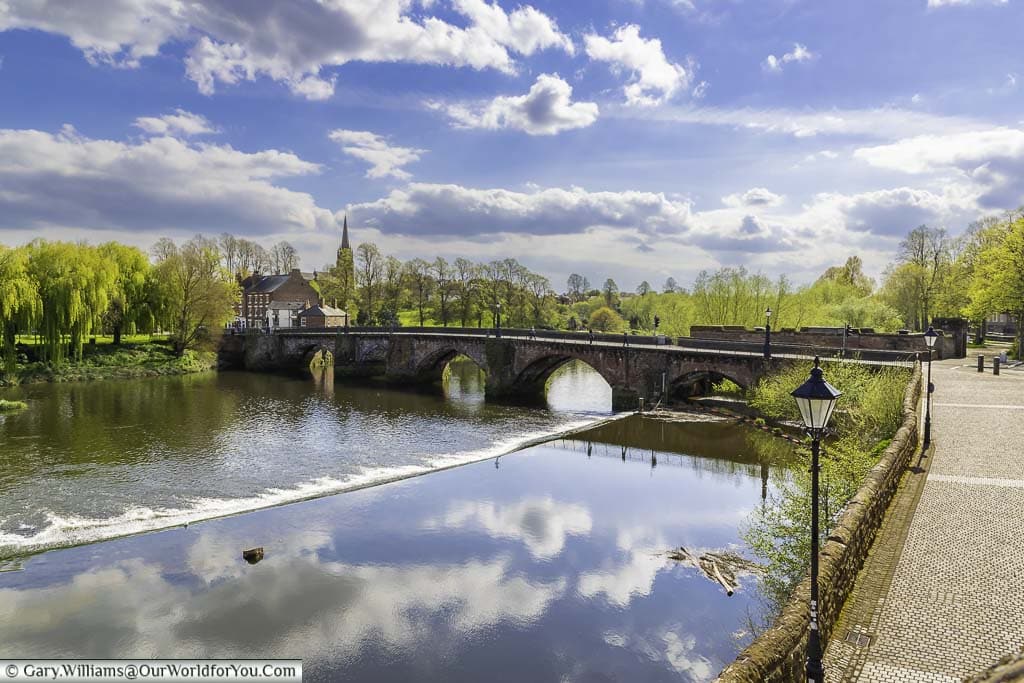
Many of Chester’s medieval buildings along The Rows at Eastgate, Northgate, Watergate and Bridge Street are hidden behind the striking black and white Victorian façades.
Chester continued to flourish and played a fundamental role in the Industrial Revolution; evidence of this can be admired by navigating the Shropshire Union Canal alongside Chester’s city walls.
Exploring the city of Chester
The most complete city walls in Britain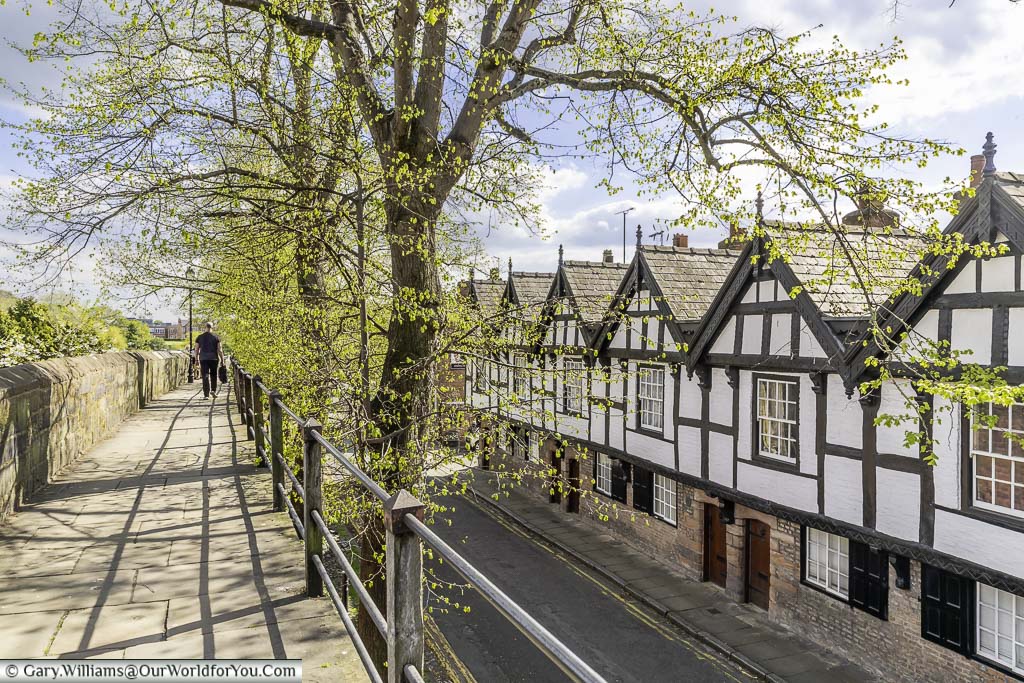
Personally, I would recommend heading to the ancient walls first, circumnavigating the entire medieval city, to truly appreciate the full beauty of Chester. Start wherever you wish, ensuring you discover every nook and cranny.
Construction of the walls started with the Roman Empire when Deva Victrix was founded; fast forward 800 years, and the Anglo-Saxons further fortified the town.
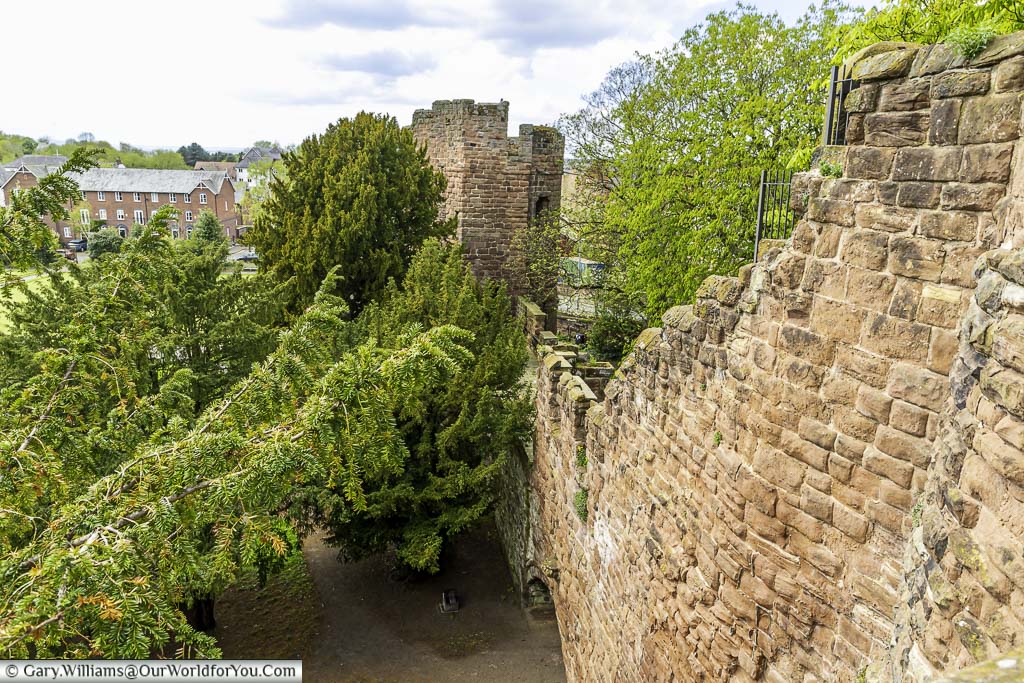
Following the Norman Conquest, William the Conqueror ordered the construction of Chester Castle in the city’s southwest corner in 1070. This led to the further construction of the city walls, and by the late 12th -century, the entire city was encircled.
Chester’s medieval castle sits in a prominent position overlooking the River Dee and has witnessed skirmishes over the centuries and many notable people were held prisoner in the Agricola Tower.
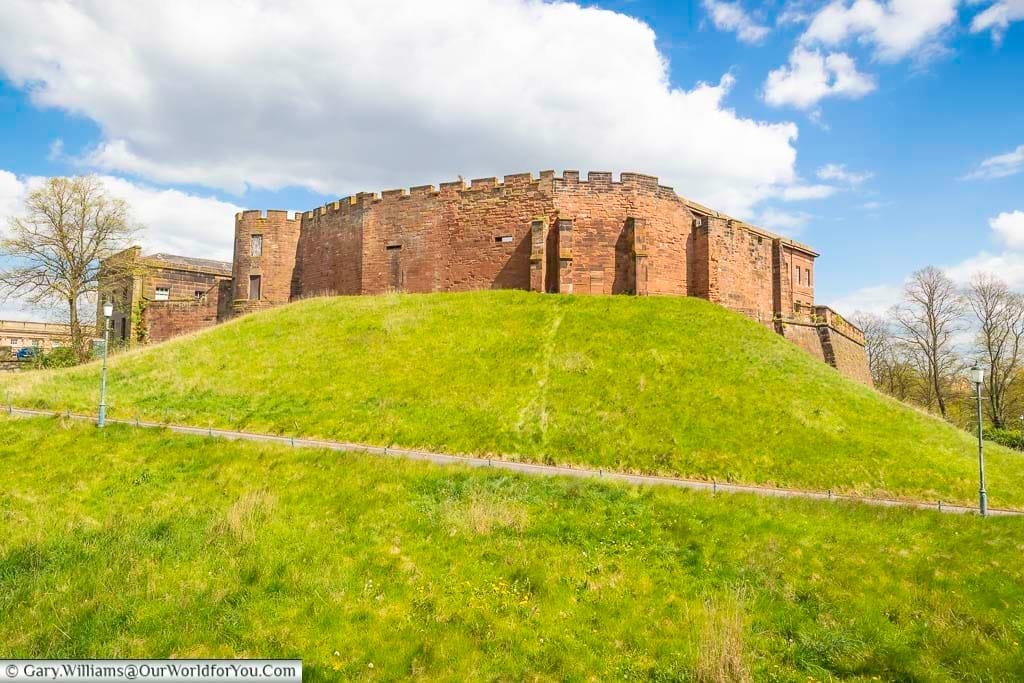
Today we can all enjoy strolling the 2-mile loop of the Grade I listed structure and admire Chester from an entirely different perspective. There’s just one break of the perimeter, which is around 100-metres (330 ft).
En-route, we’ll wander by Chester Cathedral, pass underneath Eastgate Clock, look down upon the rolling River Dee and have a birds-eye view across the Roman Amphitheatre.
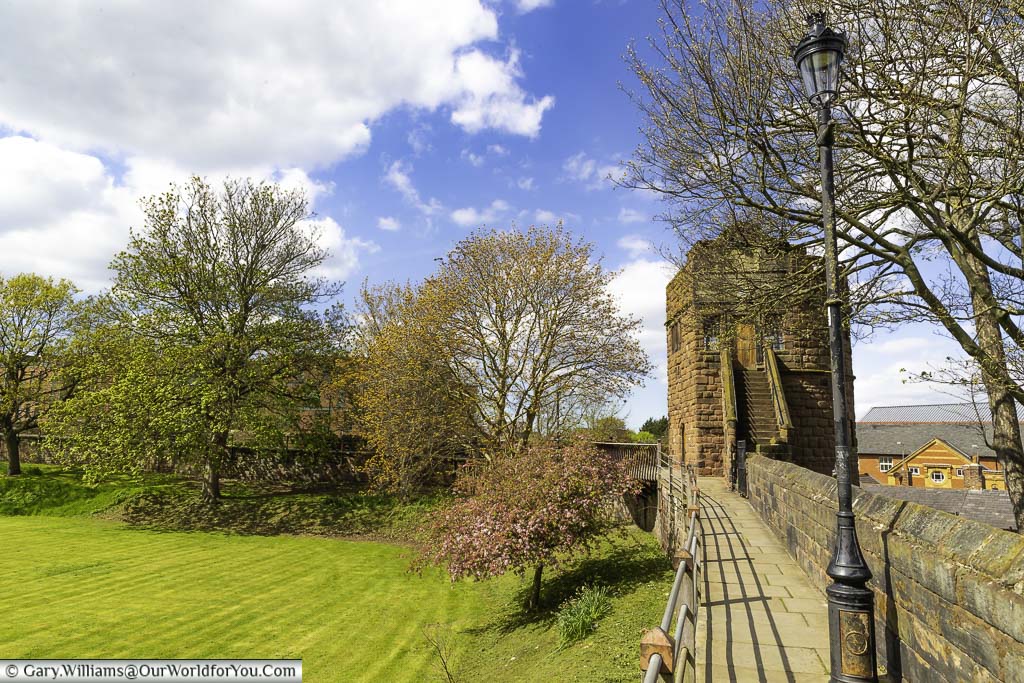
Chester’s Roman Amphitheatre
Unearthing an ancient wonderThe Roman Amphitheatre in Chester is the largest presently uncovered amphitheatre in Britain and was built during the late first century AD.
The magnificent arena is designated as a Grade I listed building and maintained by English Heritage.
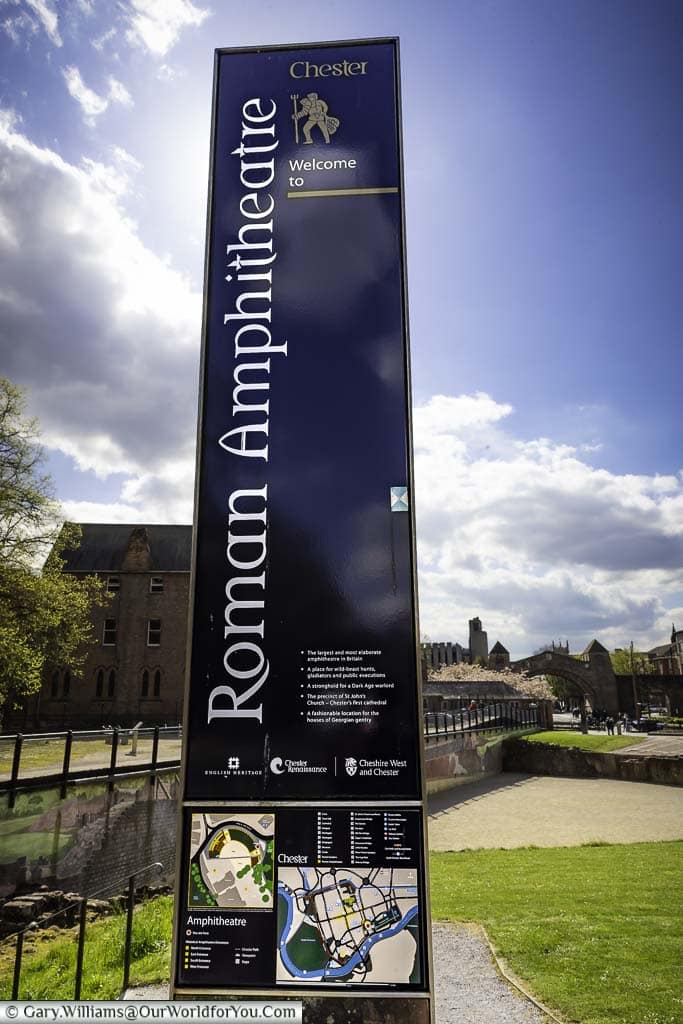
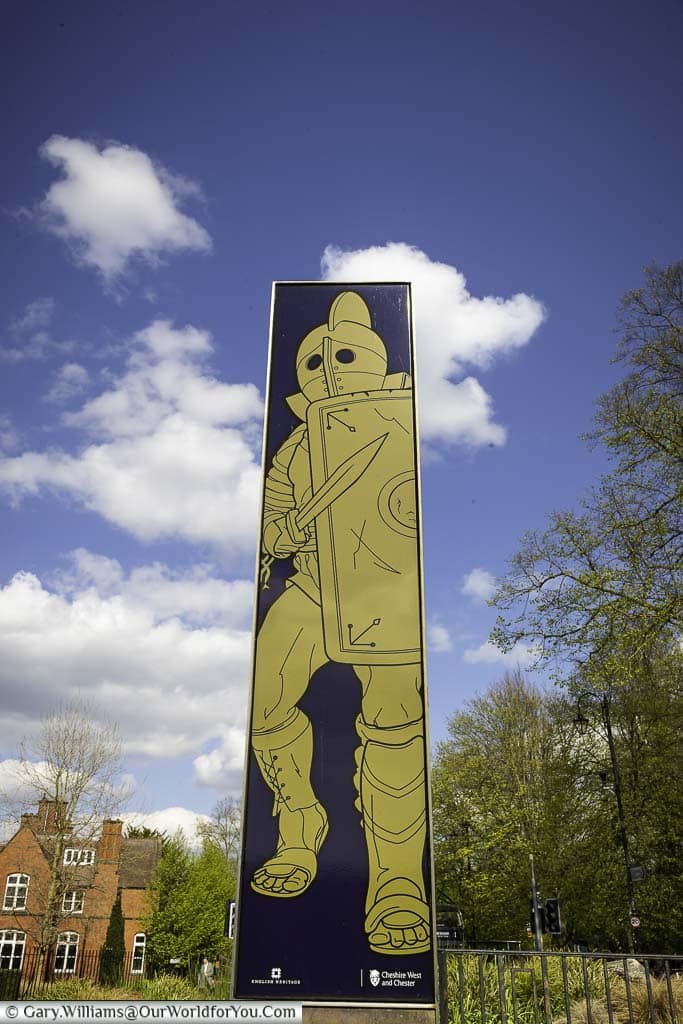
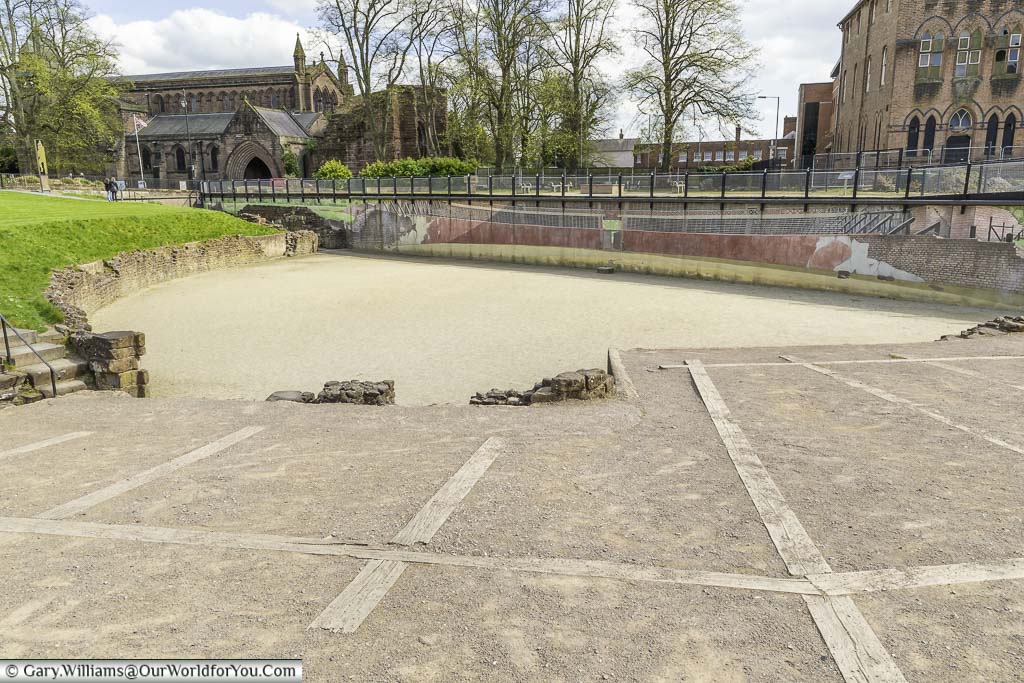
Today only around two-fifths of the oval amphitheatre is visible; the southern half remains buried beneath listed buildings.
It is believed that when the amphitheatre was built by the Romans, it was used for entertaining the locals and practising troop manoeuvres. Two entrances of the arena are visible today, the outer walls are 9 feet thick, and the stadium floor is sunk by 3 feet.
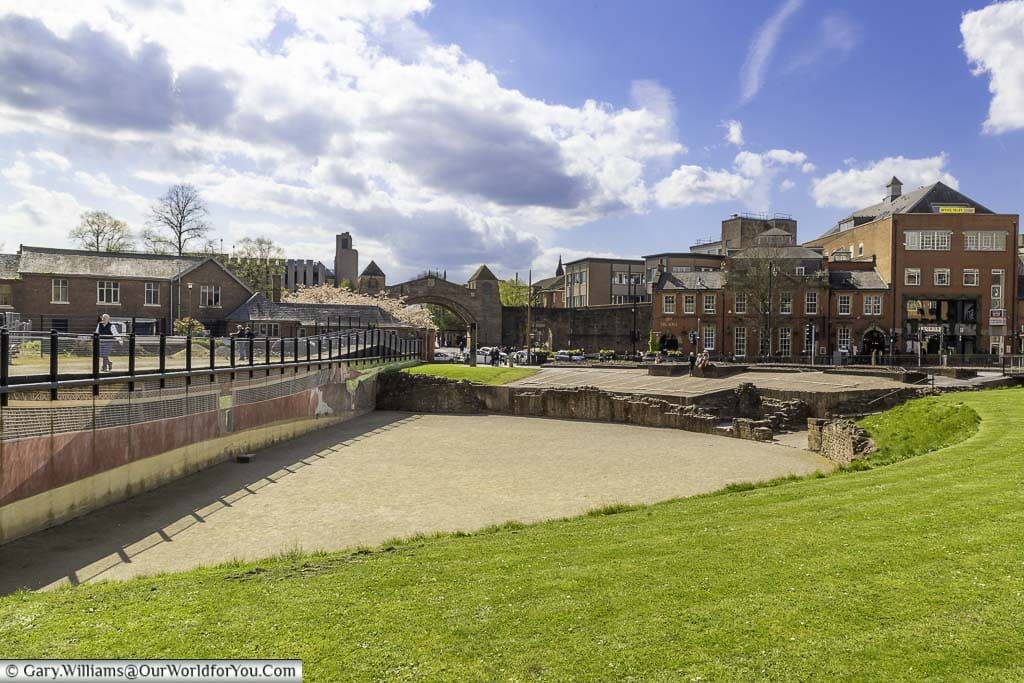
The amphitheatre had a reasonably short lifespan with the Romans; by the 120s AD, it was derelict.
Chester amphitheatre is open during daylight hours and is free of charge to visit; you are allowed to wander around the arena as you please, soaking up this ancient wonder.
If you're intrigued to visit the beautiful county of Cheshire and the historic city of Chester, then why not check out Bradt’s travel guide. Full of helpful advice, interesting facts and time-saving tips.
You can pick it up for your Kindle or in good old paperback.
Chester’s unique Rows
700 years of splendour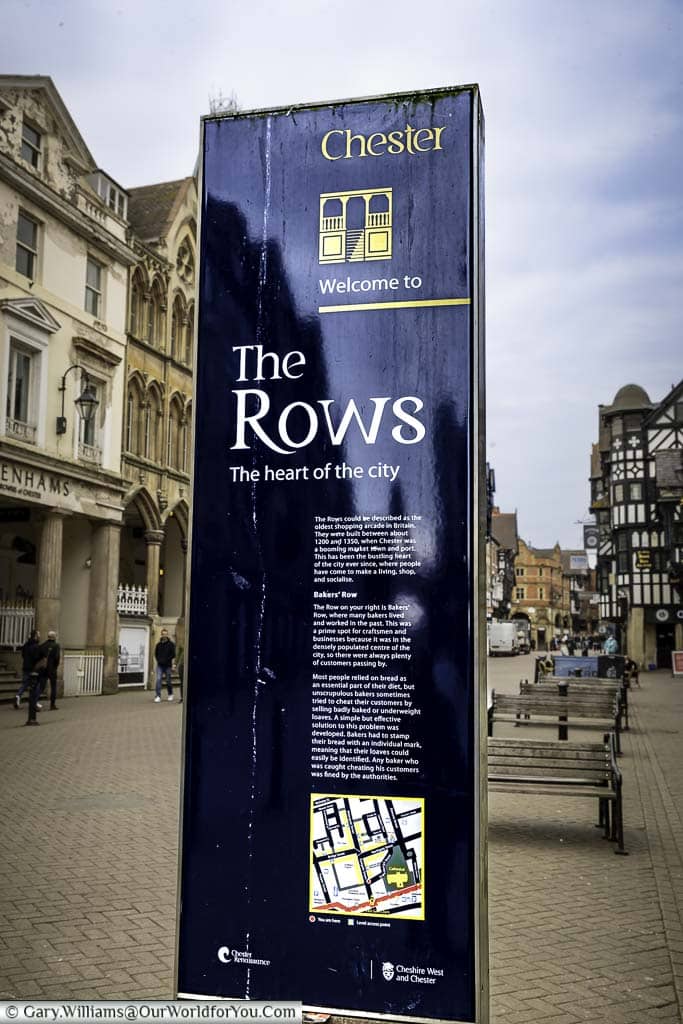
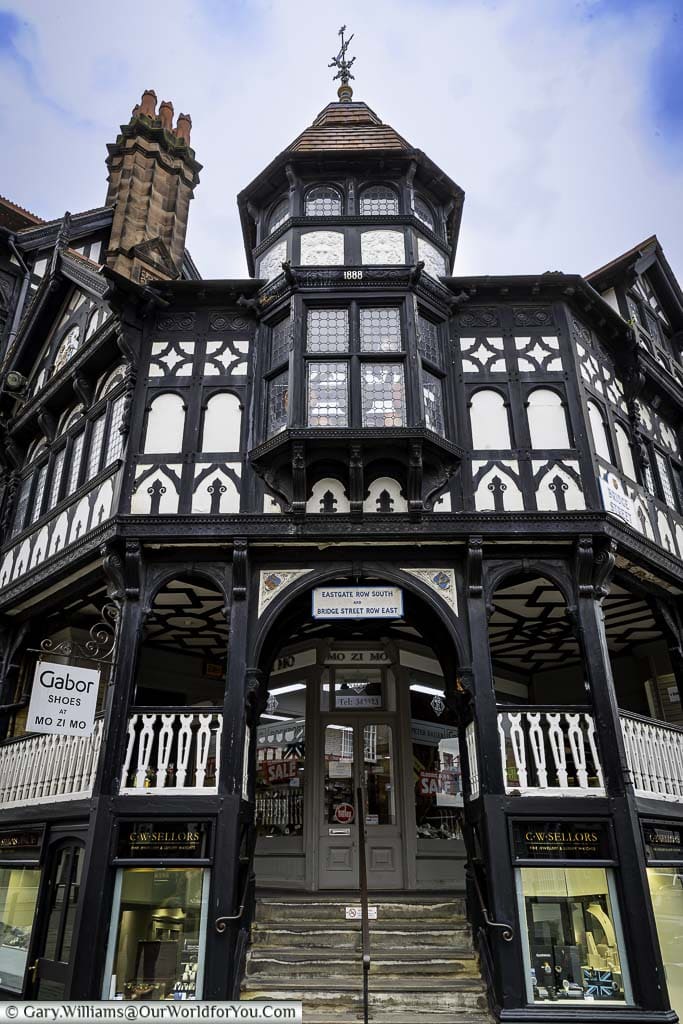
The two-tiered medieval shopping galleries date from the late 13th-century. Some buildings are believed to be the earliest examples of shopfronts in England.
The Tudor revival black and white timbered façades were added during the Victorian era and veiled the original medieval features behind. The timber framing adds a further unique element to the Rows, making them exceptionally eye-catching.
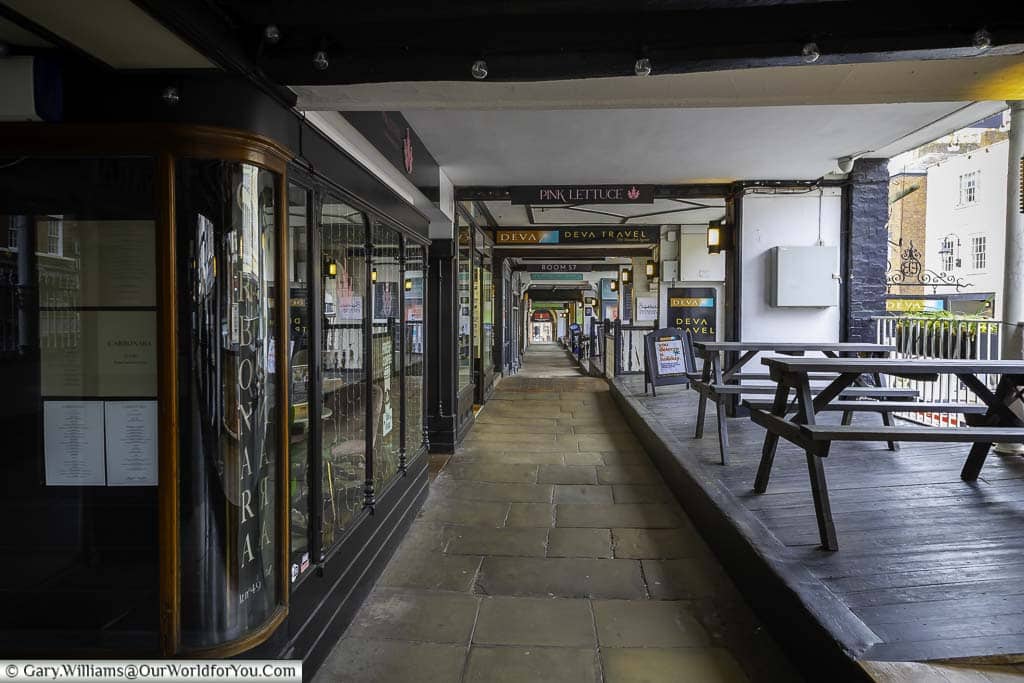
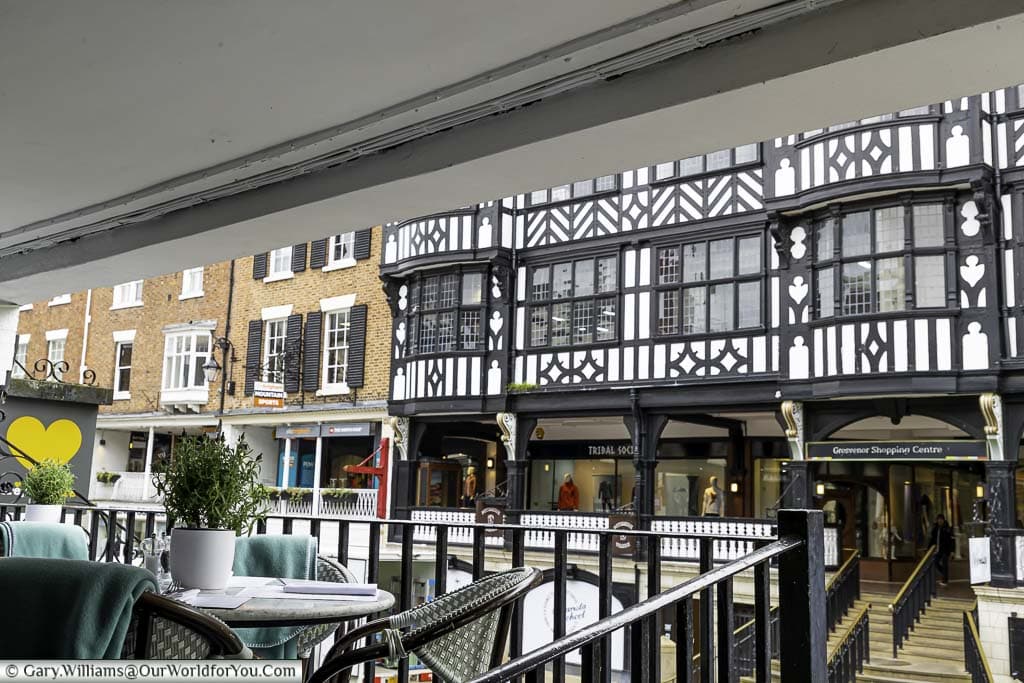
Many of the tiny shops date back centuries and are full of so much character. As you amble around the Rows beneath the undercrofts, and passing the ornate balustrades you really feel like you’ve stepped into another era.
I loved wandering all around the charming galleries. It’s mind-blowing to imagine the footsteps that have passed across the old flagstone floors and the creaking floorboards. The undulating ceilings stretch far out before you and occasionally you’ll have to dip your head.
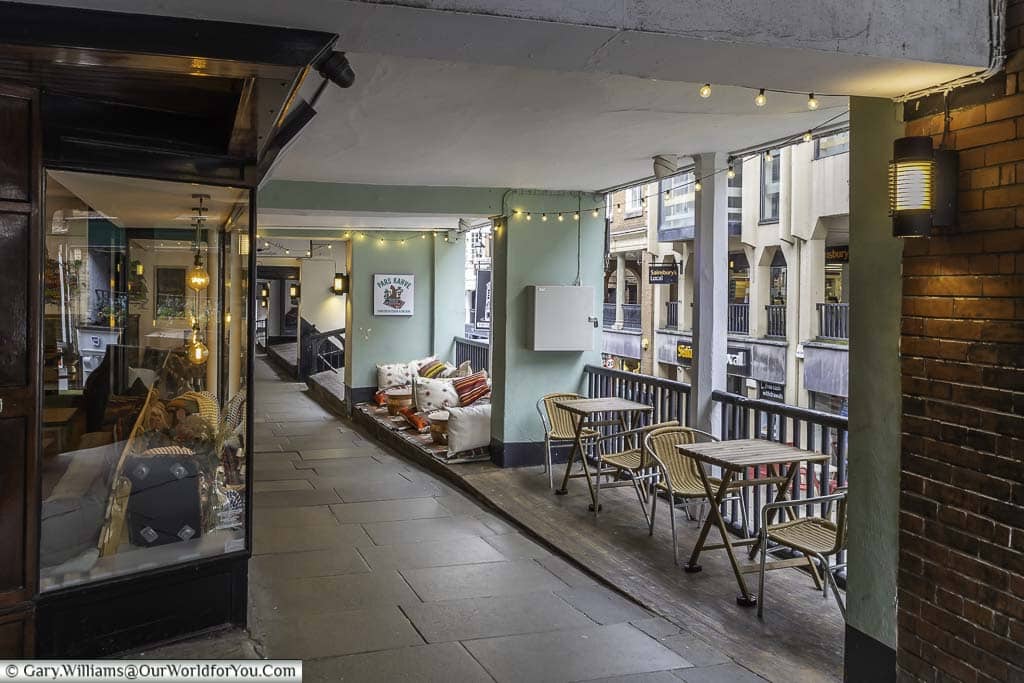
As you turn the corner of the upper Row from Eastgate to Bridge Street, keep a look out for the charming jewellery quarter. Here you’ll see some true delights, particularly Lowe & Sons who were established in 1770.
It is astonishing that these beautiful examples of ancient architecture still exist and adds further to Chester’s rich heritage.
Discover Chester Rows: The Audio Trail
For a fascinating insight into the history of the Rows and some quirky fun facts, ensure you listen to the 30-minute Discover the Rows audio guide.
This delightful trail and map by Helen Cann will guide you up and down the undulating Rows divulging their ancient history and sharing incredible knowledge about each of the four main streets.
Chester’s Eastgate Clock
A Diamond Jubilee celebration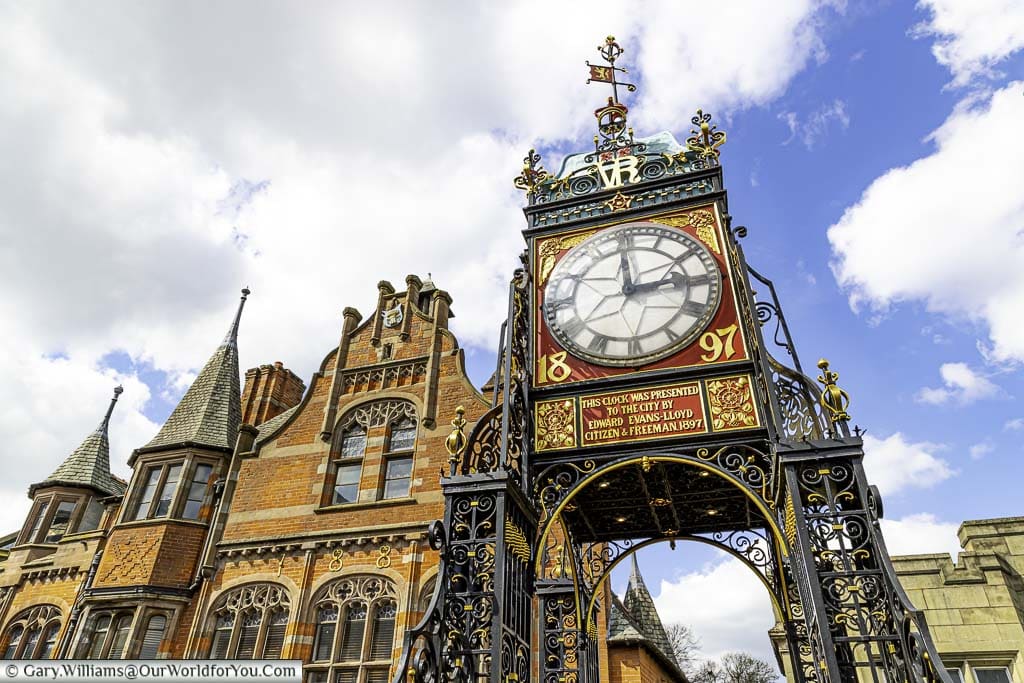
The ornate Eastgate clock was designed by the architect John Douglas in 1899. It was positioned above the gateway to celebrate Queen Victoria’s Diamond Jubilee in 1897, two years prior. The clock was officially opened on Queen Victoria’s 80th birthday in 1899.
The Eastgate clock has a face on all four sides and is supported by intricate wrought ironwork. This historic clock is believed to be the second most photographed clock in the UK after Big Ben.
Where to stay in Chester
Hotel Indigo Chester is a modern, contemporary boutique hotel that has welcomed guests since 2019.
Hotel Indigo Chester is situated just a short hop outside Chester’s city walls; within only an 8-minute stroll, you’ll be admiring the iconic Eastgate Clock. Or 5 minutes south, you’ll wander through Grosvenor Park down to the River Dee and The Groves.
Onsite parking is unavailable; however, Hotel Indigo Chester has exclusive discounts with the nearby NCP car park on Pepper Street.
A visit to Chester Cathedral
And St John the Baptist's Church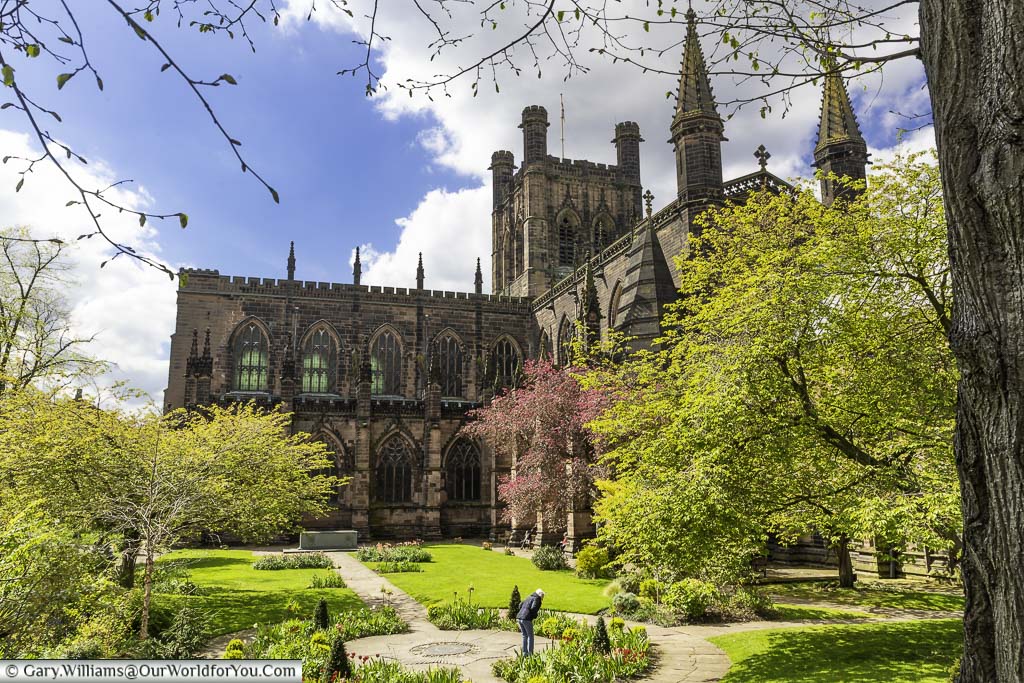
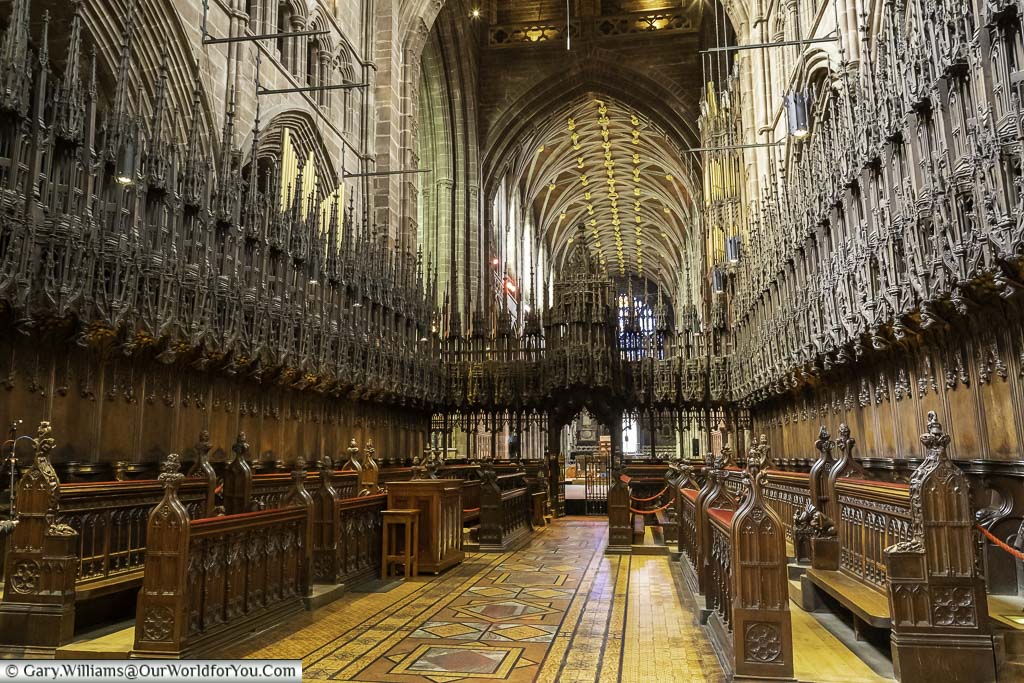
Since the 10th-century many architectural influences have been undertaken on Chester Cathedral. Examples of Norman, Romanesque, Gothic and other medieval styles can still be identified.
It is free to visit Chester Cathedral, although a donation is very welcome.
The cathedral appears quite deceptive from the outside. As you step inside, it is vast; the stunning nave and quire reminded me of our visit to Westminster Abbey.
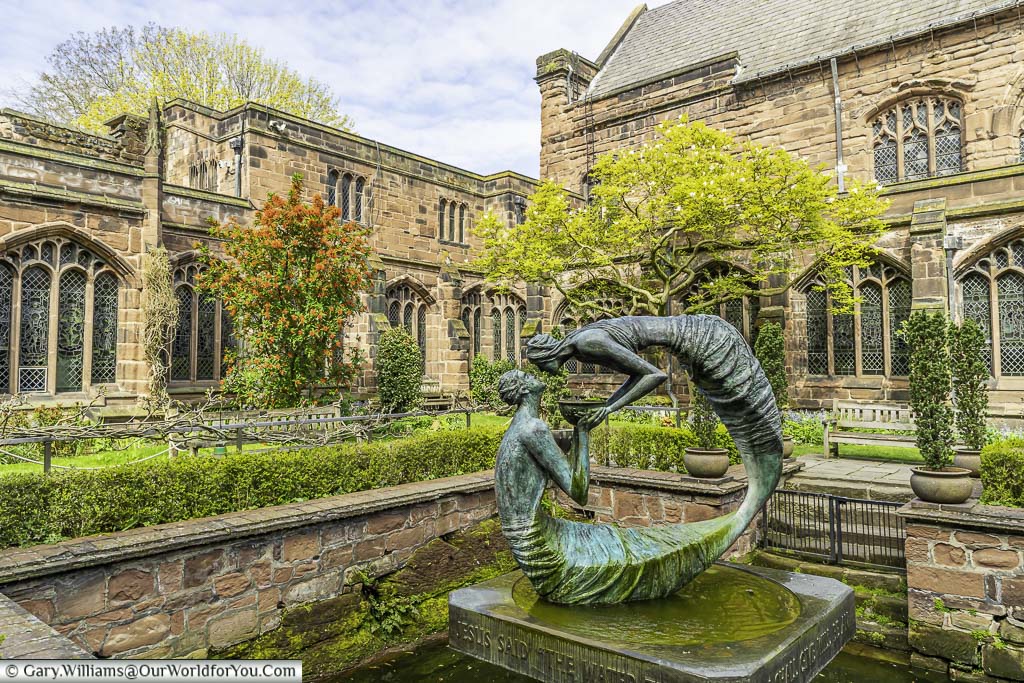
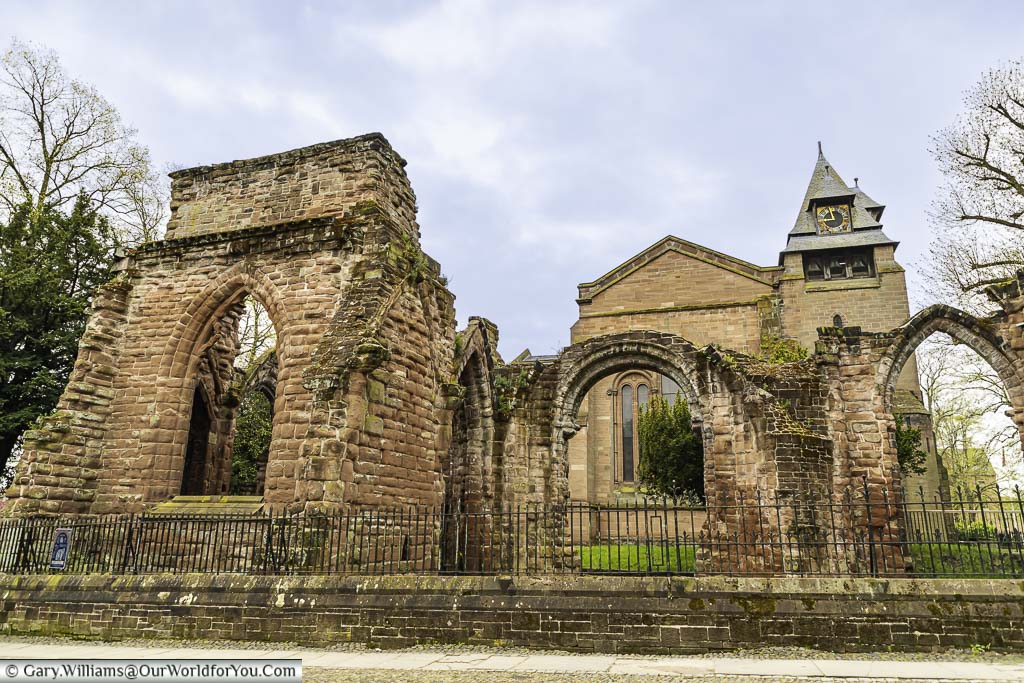
Another significant church in Chester is St John the Baptist's Church, built on the command of William the Conqueror. This ancient church is nestled within the architectural ruins of its larger medieval predecessor. It was later restored during the 19th century.
St John the Baptist’s Church was the former cathedral of Chester until 1082. Following the dissolution of the monasteries in the 16th century, Chester Abbey then became Chester Cathedral.
An enchanting stroll along The Groves
Or hop on a scenic boat tripAs usual, I’m seduced by the sights and the sounds of water and the delightful waterways to discover in Chester are the picturesque River Dee and the attractive workhorse, the Shropshire Union Canal.
Starting on the north side of the Old Dee Bridge, rebuilt in 1387, head east. From here, stroll along the riverside by the ancient city walls and admire the gushing weir spanning the River Dee.
You effortlessly amble along to The Groves, where you can sit and relax on one of the many benches and watch the world go by, and why not grab yourself an ice-cream as well?
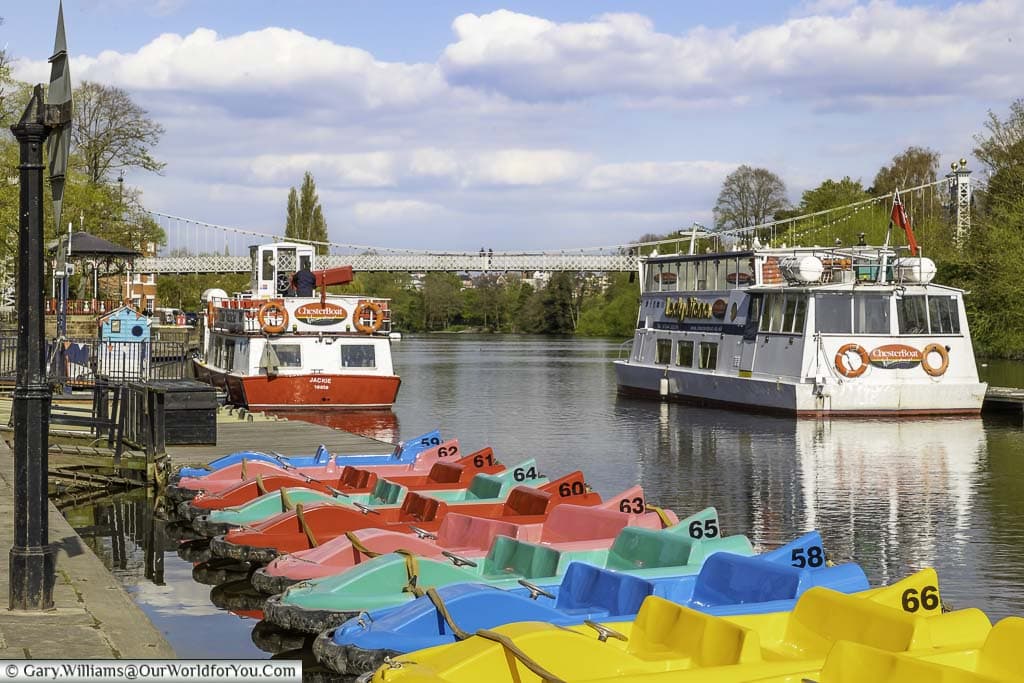
This is a lovely recreational area of Chester to enjoy; if you’re visiting during the summer months, you may even catch a performance on Chester’s Grade II listed bandstand.
From this section of The Groves, you can hop on a sightseeing boat trip with ChesterBoat and enjoy a leisure cruise along the River Dee.
Continue along to the ornate Queen’s Park suspension bridge; this footbridge was opened in 1923 and, in April, celebrated its centenary. Further along, The Groves head north, wend your way up to Grosvenor Park, and relish a leisurely stroll through the tranquil gardens.
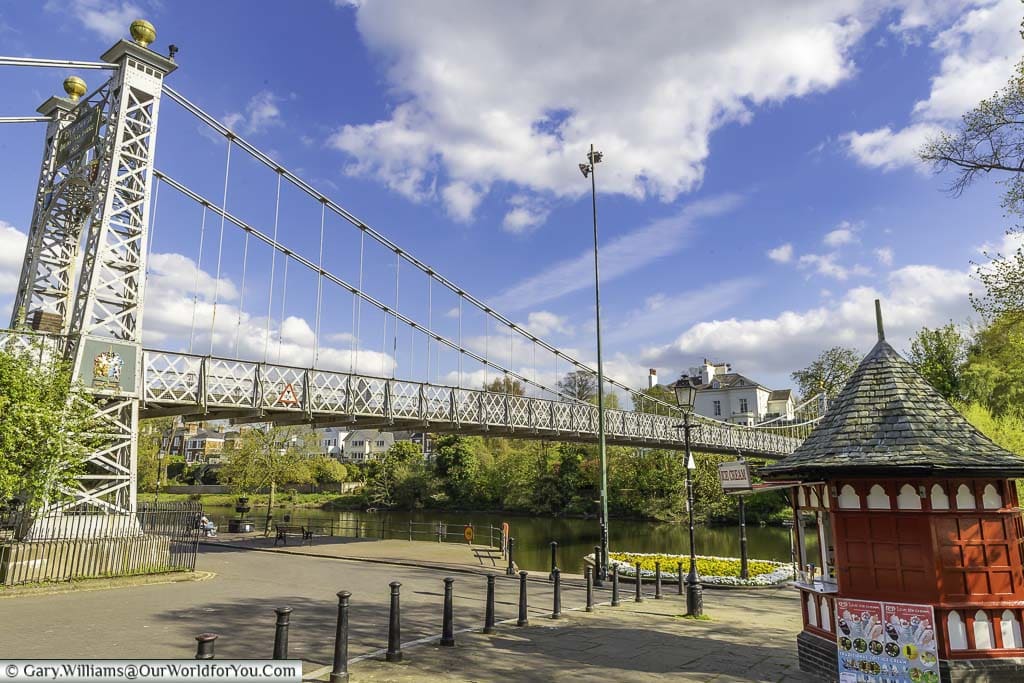
Tourist Information
Exploring Chester Basin
Discover a peaceful havenKeeping with the water theme, if you’re following the circular path of Chester’s ancient city walls, ensure you leave a little time to divert slightly to Chester Basin by The Water Tower. This delightful haven is where the River Dee and the Shropshire Union Canal meet.
Stroll along the towpath below the towering city walls. You’ll stumble upon a couple of working locks or, for a very, very long walk, head north. You’ll eventually arrive at the Manchester Ship Canal and the River Mersey.
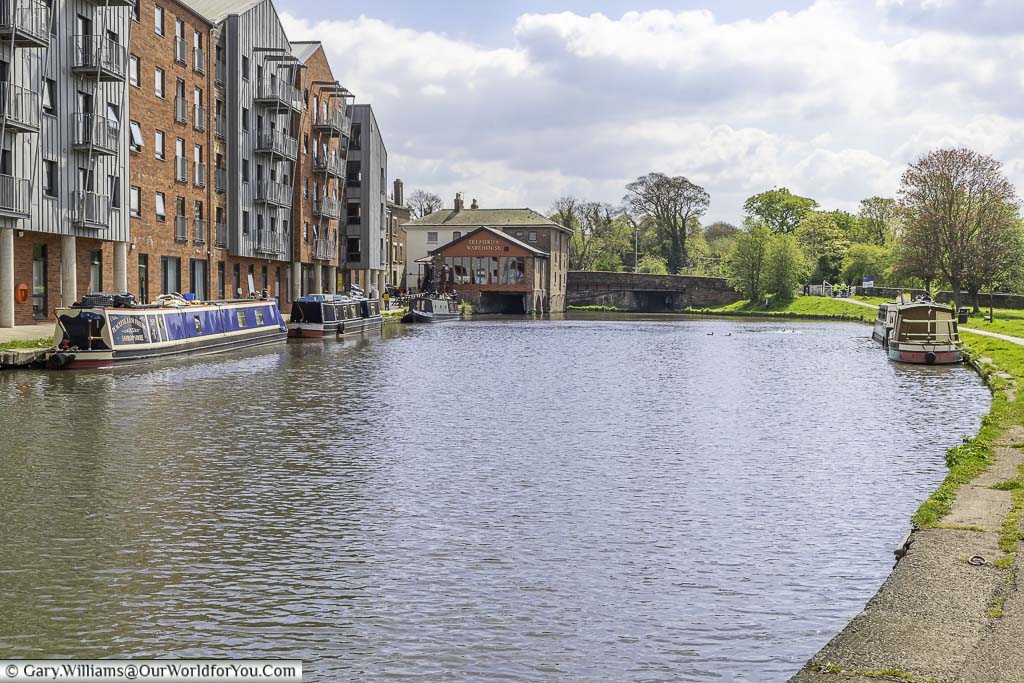
Though, I do recommend stepping down and strolling around the towpaths near Telford’s Warehouse, which I also endorse for a relaxing beer by the canal. Wander all along the canal side, and you’ll spot colourful narrowboats moored up for the night. You’ll also see Taylor’s Boatyard established in 1795 as a working boatyard and dry dock.
I loved it all around here, a different perspective on city life
Where to eat in Chester
The Forge Restaurant offers a relaxed and casual dining experience in charming surroundings. The 70-seater restaurant was opened in 2019 by Chef and restaurateur Mike Robinson.
The cuisine is of exceptionally high quality and is all freshly prepared in their open-plan kitchen. The emphasis at The Forge restaurant is on British food, using only British ingredients with importance being aimed at sustainability.
For a relaxed and informal dining experience, we highly recommend The Kitchen at Storyhouse. The food is freshly prepared at the in-house theatre restaurant. It offers locally sourced produce served in an East Mediterranean style.
You can have light-bites, including wraps and pittas or choose one of their delicious salad bowls with a variety of kebabs served with red cabbage slaw, seasonal hummus, pickles, couscous, and sauces.
Admire the Art Deco Storyhouse
Explore Chester’s Market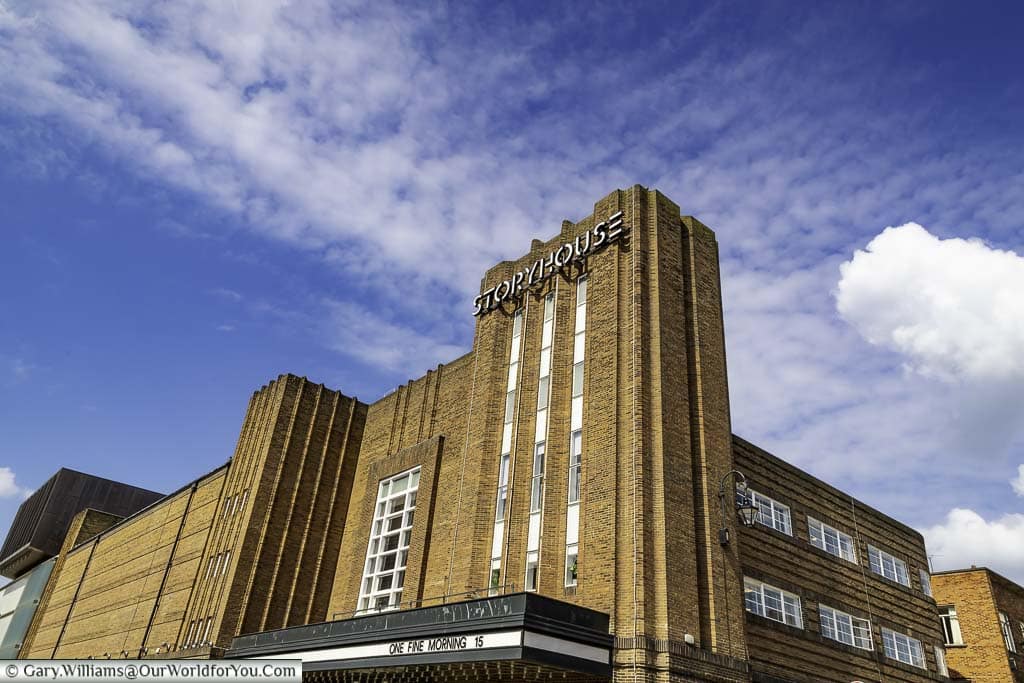
The Art Deco building was constructed in 1936, originally as an Odeon Cinema, which closed in 2007. Thankfully a decision was made to restore the building, and in 2017 a new multi-award-winning arts centre was opened after a £37 million makeover. The interior of the picture house is extremely impressive.
Within the Storyhouse are an 800-seat auditorium, a 150-seat studio theatre, and a 100-seat boutique independent cinema. Additionally, you’ll find a fantastic library, reading rooms and places to study. It’s such a lovely place to sit and relax in pleasant and peaceful surroundings.
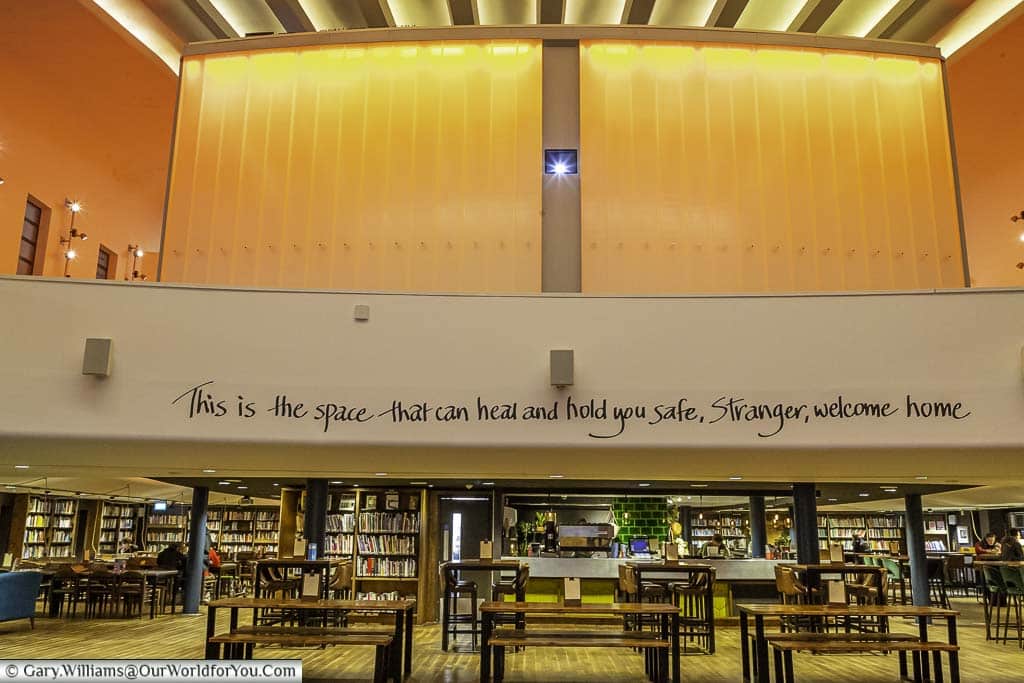
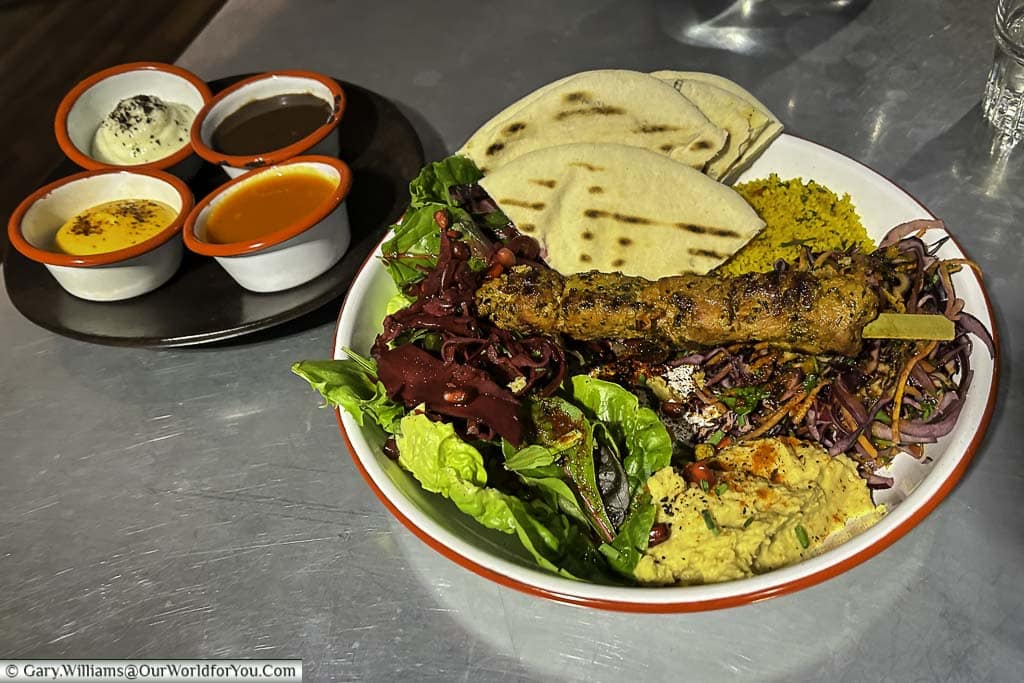

Exploring the heart of Chester
History at your feet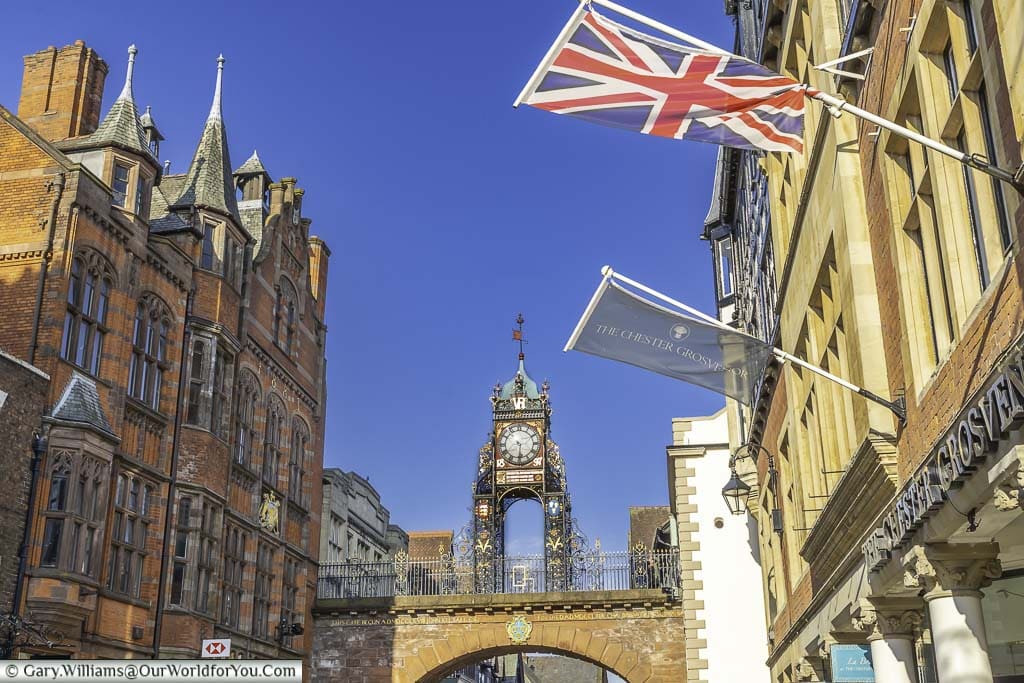
Chester truly is a stunning city, and the architecture throughout the old town is breath-taking. One building that is particularly striking is Chester’s majestic Town Hall. The Town Hall was built in the style of Gothic Revival in 1869 and replaced the former Town Hall, which was constructed in 1698, but unfortunately burnt down in 1862.
An interesting fact that we found out was that Chester’s Town Hall only has three clock faces on its ornate tower. When the clock was installed in 1979, no face was placed on the west side of the tower, and it was based on the Cloth Hall in Ypres, Belgium.
Chester’s visitor centre is located on the ground floor of the Town Hall.
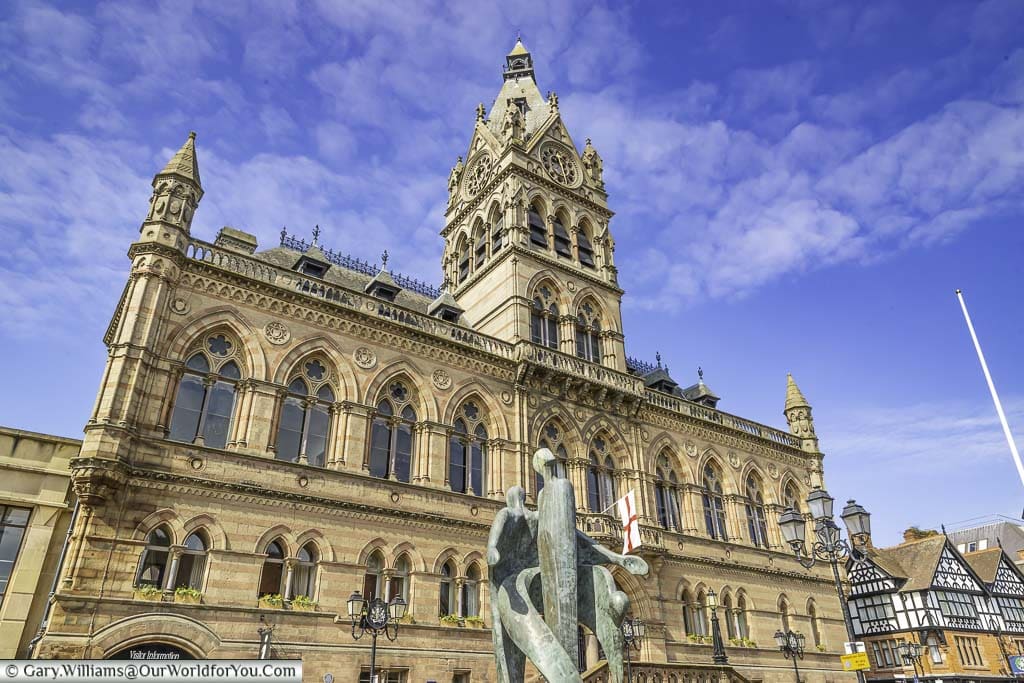
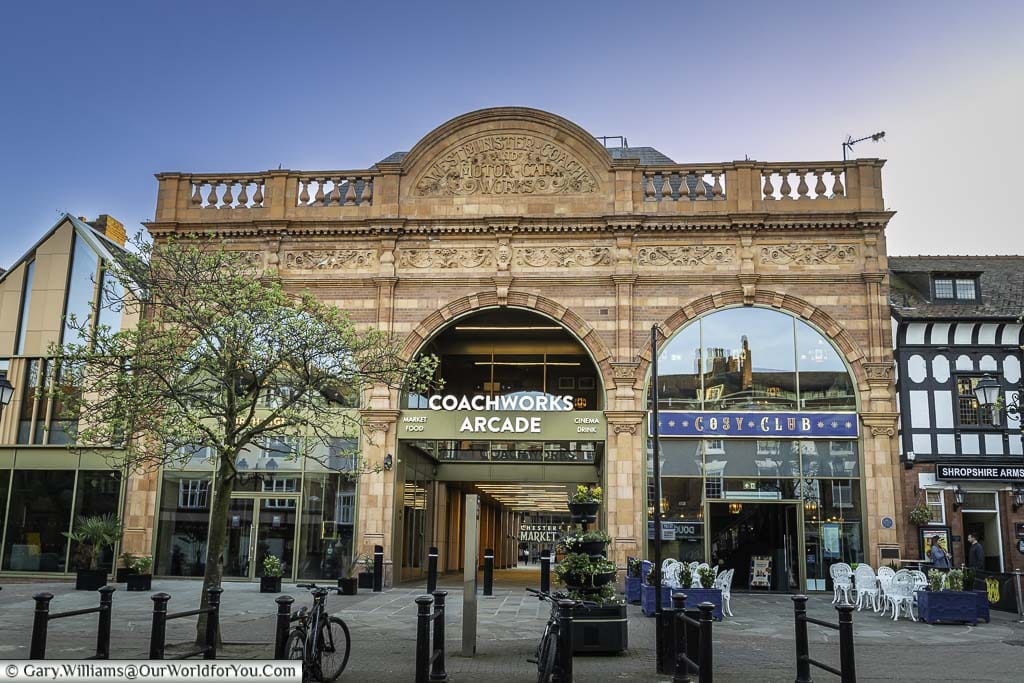
Visiting the Grosvenor Museum
Life in West CheshireThe Grosvenor Museum was founded in 1885 and is located in a beautiful Renaissance building on Grosvenor Street. The museum takes you on a journey through the history of West Cheshire and Chester and opens your eyes to the lives and tales of local folk.
The museum is free to visit. Inside, you’ll discover centuries of fascinating history in the region, from ancient fossils and the arrival of the Romans to the construction of the Rows and modern-day Chester.
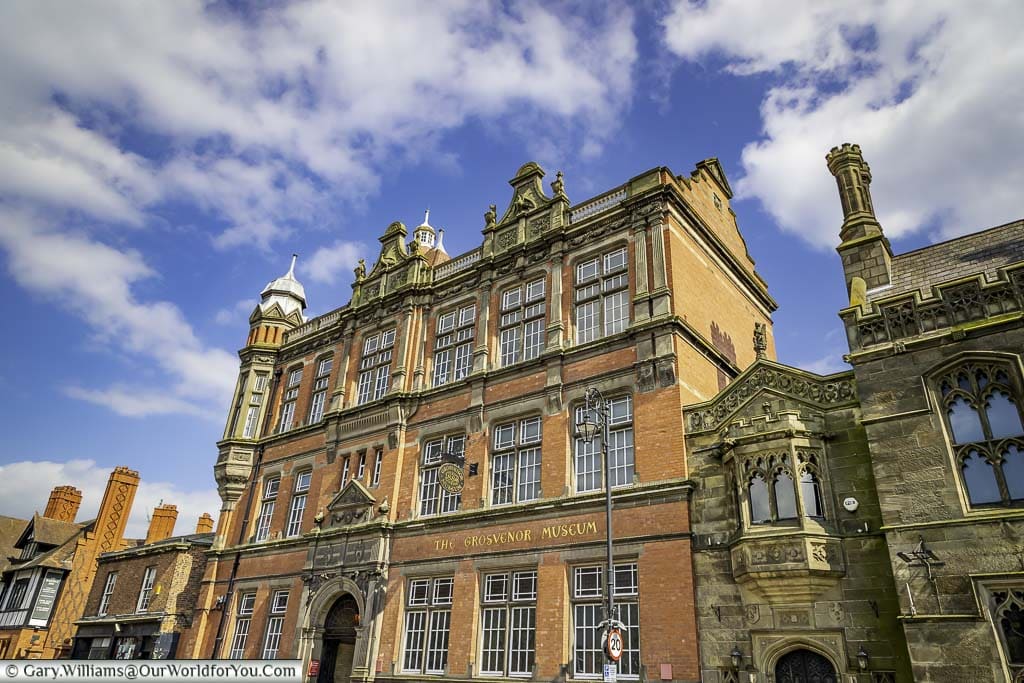
Grosvenor Museum shares collections of modern and historical art, silverware and ancient artefacts in their permanent displays and additionally houses varying exhibitions throughout the year.
Towards the end of your visit, you can explore the rooms of a period house no. 20 Castle Street and catch a glimpse of how life would have been in a gentry townhouse.
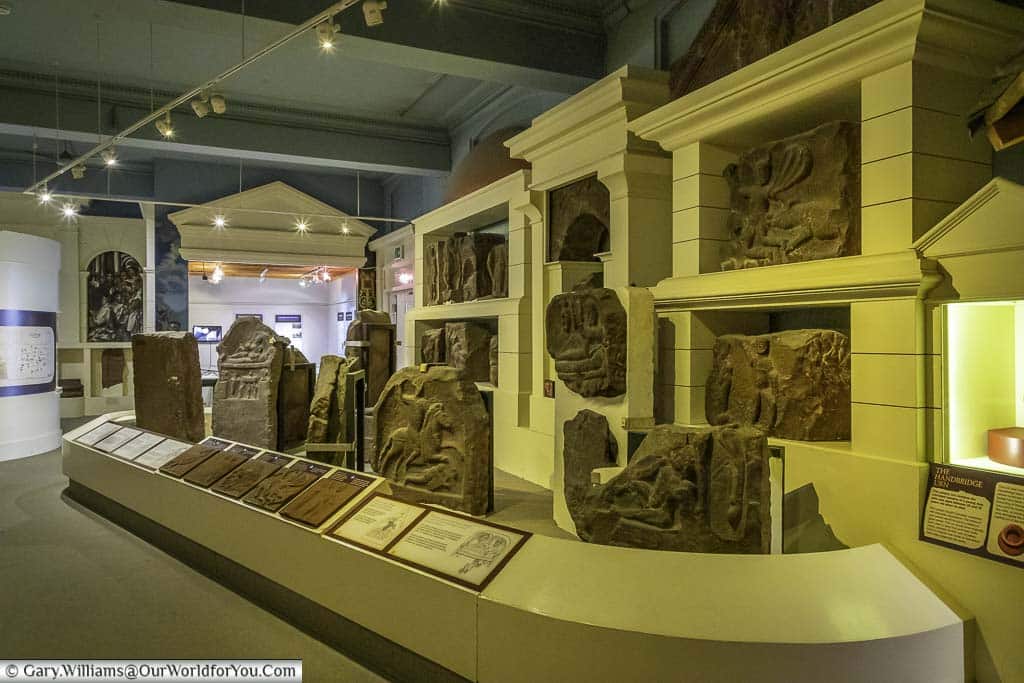
Spend a day at Chester Racecourse
Off to the RoodeeChester Racecourse is recognised as the oldest racecourse in the world, which is still in operation. It held its first race meet in 1539.
However, what I find completely incomprehensible is that the racecourse’s sixty-five-acre site was once a bustling port and harbour during the Roman occupation. The harbour continued to be utilised, but as centuries passed, silt began to build up, and the river became unnavigable.
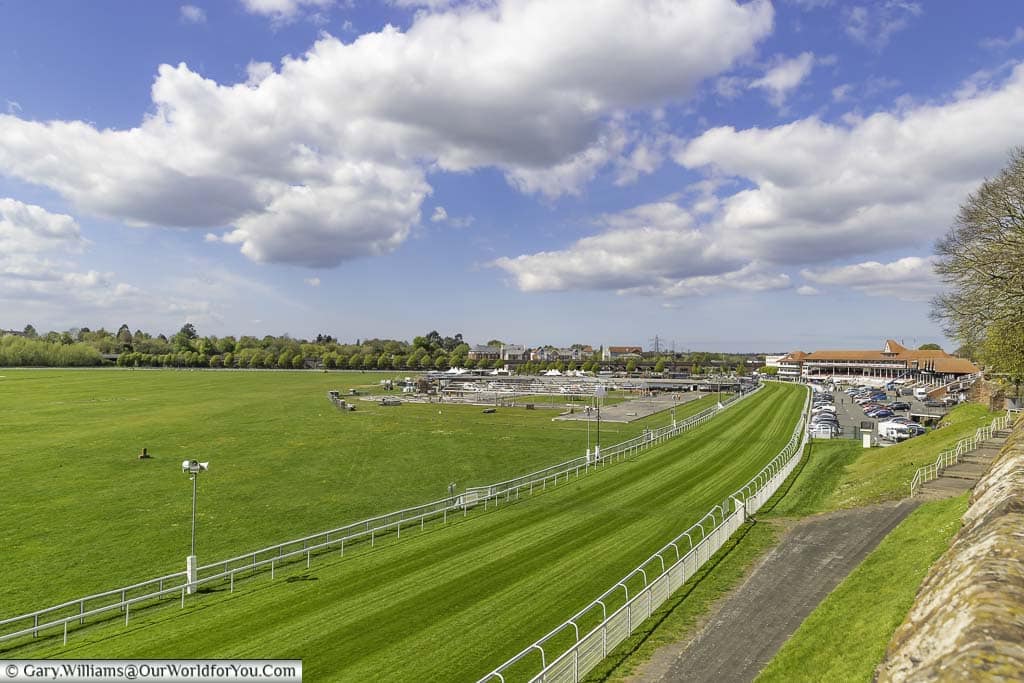
Some anchor stones for the historic ships can still be seen at the racecourse. More importantly, a small sandstone cross sits on a mound in the centre of the field; this was once an island.
Chester Racecourse is also named the Roodee, derived from ‘Roodeye’, which is a combination of Norse and Saxon and means The Island of the Cross.
You can spend a day at the races as Chester Racecourse runs fixtures from May to September.
Our video of Chester
We have created a little YouTube video of Chester. Why not take a look?
Also, why not subscribe to our YouTube channel and get the latest clips as we post them?
Disclaimer
* This post may contain links to affiliated sites where we earn a small commission at no additional charge to you.


Excellent write up – wish we’d stayed there in our way to the Peak District!
Thanks Christine for your kind comments.
We’d wanted to visit Chester for many years, I heard so many positive things about it. It’s a delightful city and quite compact, I’d highly recommend a visit, especially if you love history.
Happy travels